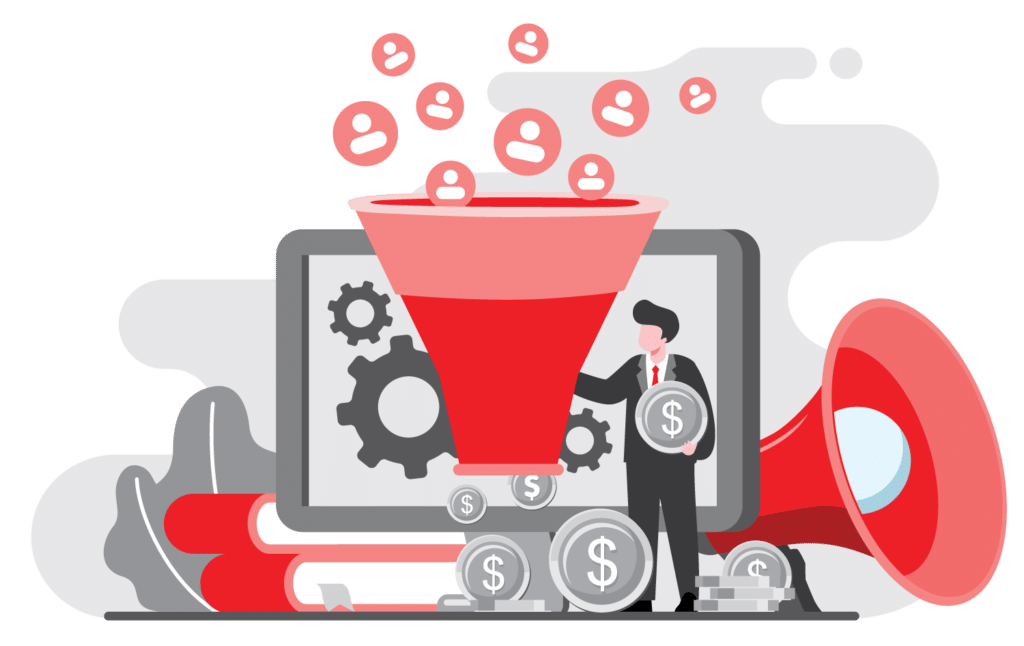Using HIRO Opportunities To Predict Pipeline ROI with Sidney Waterfall

Most modern B2B companies understand that sales and marketing are no longer independent siloes, but few have adjusted their attribution strategy accordingly. Our latest podcast guest offers a more collaborative way to view attribution.
Sidney Waterfall is the SVP of Growth at Refine Labs, the world’s first Revenue R&D laboratory. She joined the Predictable Revenue podcast to discuss pipeline sources and how to use them to accurately predict the ROI of revenue programs.
A new method for attribution
Traditionally, the revenue organization is broken down into departments (marketing, sales, customer success), but buyers rarely move through the funnel in such a linear fashion.
A better attribution method is to think in terms of pipeline sources–all ways you capture demand, such as cold calling, website SEO, email outreach, LinkedIn, account-based marketing, events, and partnerships.
Each pipeline source has a different sales cycle length and performance metrics, and taking that into account results in a much more accurate prediction of ROI.
Measuring pipeline sources
Because each pipeline source represents a different entry point into the funnel, the sales motion will be fundamentally different between sources.
To standardize the different sources, Sidney recommends breaking each pipeline into three to five stages based on where that opportunity is in the sales process and the expected win rate.
To calculate the pipeline ROI, look at the number of high intent revenue opportunities (HIRO), where the win rate is likely to be greater than 25%. For most pipeline sources, this is stages three or four and higher.
Three categories of demand generation
For a simplified view of pipeline sources, consider the three phases of demand generation: create, capture, and convert.
Create refers to any methods used to grow visibility, such as events, partnerships, and marketing content. You can determine which pipeline source was responsible for creating demand by asking new leads how they heard about your company.
After creating demand, you need some way to capture those leads. This usually involves an opt-in or contact form on your company website.
Lastly, you need a method of converting leads into paying customers, traditionally where sales step in. However, there’s an argument to be made that sales reps and leaders should also have a role in the earlier phases of creating demand.
Integrating sales with other aspects of the funnel
Research from Gartner shows that B2B buyers spend only 17% of the sales process meeting with potential suppliers, compared to 27% researching independently online.
Smart salespeople understand that to reach modern buyers; they need to adopt a more consultative approach. Likewise, product or tech experts can also play a part in converting leads into customers by posting about the product online.
Creating content, networking, and becoming a part of active online communities are great ways to connect with prospects–as long as the intent is to educate, not sell.
Attributing leads that interact with multiple sources
Most leads will have touchpoints with more than one pipeline source, but the pipeline source is only set once the lead engages in a sales conversation and begins the buying process. This usually falls under the “create” or “capture” category from above.
How to test new pipeline sources
Before adding another pipeline source to the mix (such as cold calling or a podcast), Sidney suggests following RefineLab’s Revenue R&D Framework to prove out new programs.
The framework follows five stages:
- Experimentation: 10 conversions or positive interactions can be attributed to the program (creating or capturing demand).
- Positive signals: The program has generated $200k in the HIRO pipeline.
- Demonstrate repeatability: Generated $250k for three consecutive months.
- Operationalize: The program reaches $1 million in the cumulative HIRO pipeline.
- Scale and Sustain: Evaluate quarterly to ensure the program maintains those metrics and forecast ROI using the standardized win rate to project revenue.
The first three stages are proof of concept, while the final two are for full integration of a proven concept. Successful programs are expected to reach the repeatability stage within six to eight months.
Following this standardized process allows you to evaluate the results objectively, regardless of which department owns the program, and fully integrate new pipeline sources in a consistent, scalable way.
Final thoughts on measuring pipeline ROI
Measuring pipeline by source instead of department not only provides a more holistic view of the sales funnel but also allows you to accurately predict pipeline ROI. If you want to connect with Sidney to learn more about this method, reach out via LinkedIn.
If you need help building a consistent pipeline of leads, click here to learn how we can help.
NO TIME TO READ?
Listen On:




